Q
What's the Price of Toyota Yaris?
The prices of the Toyota Yaris vary depending on the models. Both the 2024 Toyota Yaris 1.5E and the 2024 Toyota Yaris G Limited are priced at RM 88,000, while the 2024 Toyota Yaris 1.5G is priced at RM 91,600. Generally, the models from earlier years are more affordable. For instance, the 2021 Toyota Yaris 1.5J is priced at RM 69,576, and the 2019 models are priced between RM 70,888 and RM 83,888. The models from different years and versions may differ in terms of configuration and features, which leads to the price variations. For example, there are differences in some comfort features, safety configurations, and interior details. Consumers can choose the suitable Toyota Yaris model according to their budget and needs.
Special Disclaimer: This content is published by users and does not represent the views or position of PCauto.
Related Q&A
Q
What is the sport mode on a 2019 Toyota Yaris?
The Sport Mode on the 2019 Toyota Yaris is a drive mode selection feature that primarily enhances power response and handling by adjusting the vehicle's electronic control systems. When activated, the transmission delays upshifts to keep the engine in a higher rev range, delivering quicker acceleration, while the steering might feel slightly heavier to improve road feedback. This mode works best for highway overtaking or mountain road driving, letting the 1.5L naturally aspirated engine stretch its legs a bit more. Keep in mind, though, that Sport Mode does bump up fuel consumption slightly, so it's best used for short bursts when you need that extra zip. Rivals like the Honda Jazz or Mazda 2 offer similar modes too, but each has its own tuning—some focus on linear acceleration, others on sharpening cornering stability. Running Sport Mode all the time could speed up wear on the drivetrain, so make sure to check your transmission fluid and engine condition regularly. Also, pairing it with the manual shift function can take the driving experience up another notch.
Q
How to check transmission fluid 2019 Toyota Yaris?
To check the transmission fluid in a 2019 Toyota Yaris, first make sure the vehicle is parked on level ground and start the engine to let the transmission reach operating temperature (usually after driving for 10-15 minutes). Shift through all gears briefly, then return to Park and engage the parking brake. Open the hood and locate the transmission dipstick (typically with a red or yellow handle, near the firewall). Pull out the dipstick, wipe it clean, reinsert it fully, then pull it out again to check the fluid level—it should be within the "HOT" marks. Also inspect the fluid color (normally clear red; if it's black or has a burnt smell, it needs to be changed promptly). Note that some newer Yaris models may have a sealed transmission without a dipstick; these require a professional technician with special tools to check or replace the fluid. Regularly checking the transmission fluid protects the drivetrain effectively. It's recommended to replace it every 40,000-60,000 kilometers or as specified in the maintenance manual. If you frequently drive in stop-and-go traffic, you can shorten this interval slightly. Using non-genuine fluid may cause gear-shifting hesitation or transmission damage, so Toyota's original ATF WS fluid is recommended.
Q
What engine does a 2019 Toyota Yaris have?
The 2019 Toyota Yaris offers a range of engine options across different markets, with specific configurations varying by trim level and regional specs. Common powerplants include a 1.5-liter four-cylinder naturally aspirated engine (badged 1NZ-FE or an updated variant), pushing out around 107 horsepower. This unit pairs with either a 5-speed manual or 4-speed automatic transmission. Higher-spec models might upgrade to a more efficient 1.2-liter turbocharged engine or a hybrid system. Known for reliability and fuel efficiency, this engine uses Dual VVT-i variable valve timing to optimize low-end torque and high-speed power delivery—perfect for city driving. It’s worth noting that the same-generation Yaris also spawned the GR Sport variant, packing a more potent 1.6-liter turbo engine, though these performance models are pretty rare locally. For maintenance, stick to the 10,000 km or 6-month interval for full synthetic oil changes, and regularly clean the throttle body to keep the engine running efficiently. Toyota’s factory 100,000 km warranty is a nice bonus too, helping cut down on long-term repair costs. If you’re eyeing a used Yaris, pay extra attention to the engine mount bushings and timing chain condition—these are common wear items on higher-mileage examples.
Q
Is the 2019 Yaris a Mazda?
The 2019 Yaris isn't a Mazda; it's a classic compact car from Toyota. However, it's worth noting that in some markets like North America, Toyota collaborated with Mazda to launch the Yaris iA (later renamed Mazda2 Sedan), which was based on the Mazda2 platform. But that's different from the Yaris models commonly seen locally. The 2019 Yaris sold locally was still Toyota's independently developed third-generation model (XP150), powered by a 1.5L naturally aspirated engine, focusing on affordability, practicality, and reliability. Its design and technology were all from Toyota, such as standard VSC vehicle stability control and seven airbags for safety. It's important to note that platform sharing or joint production between car brands is common in the industry. For example, Toyota also has technical partnerships with Suzuki and Subaru. Such collaborations help optimize R&D costs and integrate the strengths of each brand, but they don't change the brand ownership of the vehicles. For consumers, when choosing a car, they should focus more on the specific model's configuration, after-sales network, and their own needs rather than just fixating on brand connections.
Q
How many miles per gallon does a 2019 Toyota Yaris get?
Fuel economy for the 2019 Toyota Yaris varies by trim and transmission. According to official figures, the automatic models with the 1.5L four-cylinder engine return around 30 mpg city, 36 mpg highway, and a combined 33 mpg. The manual transmission version is slightly thirstier, checking in at about 32 mpg combined. This car has won over plenty of buyers with its budget-friendly fuel costs and solid reliability, making it a great pick for daily commutes and city driving. Beyond just sipping gas, the Yaris is known for its compact size and nimble handling—perfect for navigating busy urban areas. If you’re really looking to maximize efficiency, keeping your tires properly inflated and avoiding aggressive acceleration or hard braking can help squeeze out a few more miles per gallon. And hey, if fuel economy is your top priority, it might be worth checking out hybrid options too—they typically deliver even better mpg numbers.
Q
What is the fuel efficiency of the 2019 Toyota Yaris?
The 2019 Toyota Yaris delivers impressive fuel economy, with figures varying slightly depending on the trim and transmission. The version equipped with the 1.5-liter four-cylinder engine and CVT transmission averages around 5.6 L/100km in city driving, drops to roughly 4.7 L/100km on the highway, and posts a combined fuel consumption of about 5.1 L/100km. That kind of efficiency makes it a solid pick for both daily commutes and longer road trips without breaking the bank at the pump. It’s worth keeping in mind that fuel efficiency can be influenced by driving habits, road conditions, and vehicle maintenance. Sticking to smooth acceleration, avoiding sudden braking, and keeping up with tire and engine maintenance can all help squeeze even more miles out of each tank. As a compact car, the Yaris has long been popular for its reliable performance and low upkeep costs, and its fuel economy stacks up well against competitors in its class. If you’re really looking to maximize fuel savings and eco-friendliness, the hybrid version is worth checking out—it takes fuel efficiency to an even higher level.
Q
Is a 2019 Toyota Yaris a good car?
The 2019 Toyota Yaris is a solid all-around subcompact that’s perfect for daily commuting. It carries on Toyota’s reputation for reliability and durability, with a smooth 1.5L naturally aspirated engine that delivers great fuel economy—ideal for city driving. While the interior isn’t the roomiest, the layout is smart, and there’s enough storage space for everyday needs. The cabin materials prioritize functionality over flash, and in terms of features, you get basic safety gear like ABS and airbags, with higher trims possibly adding nice-to-haves like a backup camera. Maintenance costs are reasonable, parts are easy to come by, and it holds its value well as a used car. If you’re on a tight budget and value practicality and dependability, the 2019 Yaris is definitely worth a look. The subcompact segment is pretty competitive, though—besides the Yaris, check out rivals like the Honda Jazz or Mazda 2. They each have their own strengths, whether in handling or interior design, so it’s a good idea to test-drive a few and see which fits your needs best before deciding.
Q
Is the 2019 Yaris a reliable car?
The 2019 Yaris holds up pretty well in terms of reliability. It carries on Toyota's usual reputation for durability, with that tried-and-true 1.5L naturally aspirated engine under the hood. Maintenance costs are pretty reasonable, making it a solid pick for daily commuting. The transmission shifts nice and smoothly, and the suspension setup leans towards comfort, which works well for local road conditions. The interior space isn't exactly cavernous, but the storage solutions are practical. Fuel economy is another plus – it's pretty efficient, so you'll save a decent amount on gas over time. When it comes to keeping it reliable, make sure to keep up with regular maintenance records, especially things like transmission fluid and brake upkeep. Those little details really affect how the car holds up long-term. If you're looking at the used market, the 2019 Yaris has decent resale value, but when checking one out, pay extra attention to the electrical system and suspension components. Those can turn into problem areas if they haven't been properly maintained. Compared to its peers, it has a relatively low failure rate, but even so, holding onto complete service records after buying will help keep it running at its best.
Q
How much is a 2019 Yaris?
The 2019 Toyota Yaris typically ranges from around RM50,000 to RM70,000 in the used car market, with prices varying based on condition, mileage, trim level, and location. The higher-spec 1.5L Sport variant or hybrid models might edge closer to RM80,000. Known for its reliability and fuel efficiency, this car’s 1.5L Dual VVT-i engine paired with a CVT transmission works great for city driving. Maintenance costs are reasonably affordable too, making it a top pick for many families. When buying used, it’s smart to check service records and accident history—factory-certified used cars are your best bet for quality. Keep an eye out for warranty offers from Toyota or authorized dealers; these vehicles usually go through strict inspections and come with extra coverage. Plus, the Yaris holds its value well for a subcompact, so you won’t take a huge hit when reselling later. If you’re on a tighter budget, 2018 or 2020 models are worth considering—they’re pretty similar in features but might be more budget-friendly.
Q
How much is a 2019 Yaris worth?
The 2019 Toyota Yaris is currently fetching prices in the used car market ranging from approximately RM55,000 to RM75,000. The exact price depends on factors like condition, mileage, trim level, and service history, with higher-spec 1.5L Sport variants or hybrid models usually commanding a premium. This car is known for its reliability and fuel efficiency, making it perfect for city commuting. Its 1.3L or 1.5L engine delivers smooth power, and maintenance costs are relatively low. With a strong presence in the used car market, parts are readily available, ensuring easy follow-uprepairs. When buying, it's advisable to check for complete service records, pay special attention to the transmission and chassis condition, and consider using a third-party inspection service to verify the car's condition and avoid accident-damaged or flood-affected vehicles. Additionally, keep an eye on the expiry dates of road tax and insurance, as these can impact the final transaction price.
Popular Cars
Model Year
Car Compare
Car Photo
Latest Q&A
Q
How does the 2022 Odyssey compare to other minivans?
The 2022 Honda Odyssey stands out among mainstream family MPVs with several competitive advantages. Its 3.5L V6 engine delivers 280 horsepower, paired with a 10-speed automatic transmission that offers smoother shifts and better fuel efficiency than many rivals still using 6 or 8-speed gearboxes.
The magic seat design is a game-changer—the second row slides sideways up to 16 cm, while the third row folds flat with one-touch functionality, making seat reconfiguration far more flexible than conventional MPVs. Perfect for families constantly juggling cargo and passenger needs.
On the safety front, the Odyssey comes standard with Honda Sensing, including adaptive cruise control and lane-keeping assist—features that often cost extra in competing models. For entertainment, it’s equipped with a rear-seat entertainment screen and CabinTalk, solving the classic "backseat shout" problem on long trips.
A standout detail? The low floor height—12-15 cm lower than most MPVs—makes entry and exit noticeably easier for kids and elderly passengers. While many MPVs prioritize space at the expense of driving dynamics, the Odyssey’s double-wishbone rear suspension (a rarity in this segment) actually improves handling stability.
Maintenance intervals align with local habits—recommended every 10,000 km or 6 months—keeping ownership costs reasonable. All in all, it’s a thoughtful package that doesn’t force families to compromise.
Q
Is there a recall on Honda Odyssey 2022?
At present, Honda has not issued any recall notice for the 2022 Odyssey. This model has shown good overall reliability performance in the local market. However, it is recommended that car owners regularly check the latest safety notices through Honda's official website or authorized service centers, as there are occasional service activities for specific components worldwide. For example, some markets have undergone preventive maintenance for the electric tailgate control module or sliding door sensor. For the daily maintenance of MPV models, special attention should be paid to cleaning the electric sliding door tracks and updating the multimedia system software, which can affect the user experience. If any abnormal conditions are found in the vehicle, such as warning lights on the dashboard or electronic device failure prompts, it is best to contact the nearest authorized repair point for professional inspection as soon as possible, after all, the seven seater model has more complex electronic devices than ordinary sedans. In addition, it is recommended that car owners develop the habit of regularly checking the condition of the vehicle, including tire wear, brake system status, etc. These large family cars usually carry heavy loads, and the wear and tear of chassis components will be relatively faster.
Q
What should I pay for a 2022 Honda Odyssey?
The used car price of a 2022 Honda Odyssey can vary depending on its condition, mileage, trim level, and warranty coverage. Typically, you can expect prices to range between RM150,000 to RM220,000, with well-maintained, low-mileage higher-spec models leaning toward the upper end. On the other hand, base trims or those with higher mileage will be more affordable.
Before buying, it’s always a good idea to get a thorough inspection from an authorized used car dealer or a trusted seller to check for accident history and mechanical issues. The Odyssey is a popular family MPV, known for its spacious cabin, comfortable ride, and reliable performance—especially its versatile Magic Seat system and efficient powertrain, making it great for long trips.
When shopping, don’t just focus on the price—consider warranty coverage and after-sales service to avoid future headaches. If your budget allows, you might also want to explore newer models or even a brand-new unit for better features and longer warranty protection.
Q
What are common problems with the 2022 Odyssey Elite?
The 2022 Odyssey Elite delivers solid performance as a premium minivan, though some owners report recurring quirks. The infotainment system occasionally freezes or lags—particularly when using Apple CarPlay or Android Auto—often requiring a reboot to resolve. Another hiccup involves the power sliding doors' sensors misreading obstacles during wet weather, usually fixed by wiping the sensors clean.
Mechanically, a handful of drivers notice slight low-speed gearshift hesitation from the 9-speed transmission, but a dealership software tweak typically smooths it out. While the 3.5L V6 packs plenty of punch, stop-and-go traffic tanks fuel efficiency; keeping air filters and spark plugs in check helps. Honda did improve cabin quietness over the previous gen, though tire hum still reaches the third row at highway speeds—swapping to touring tires helps if you're picky about noise.
One nitpick: The Honda Sensing suite's automatic braking tends to be jumpy in crawling traffic, triggering false alerts. You can dial down its sensitivity via the touchscreen. Pro tip: Given the Odyssey's heft, brake pads wear faster—stick to 10,000-mile inspections.
Q
How long will a 2022 Honda Odyssey last?
The 2022 Honda Odyssey can typically last between 200,000 to 300,000 kilometers—or even longer—with proper maintenance and reasonable use. Its actual lifespan depends on driving habits, maintenance frequency, and road conditions.
Under the hood, the Odyssey comes with Honda’s proven 2.4L i-VTEC engine or a hybrid system, both known for their durability. Staying on top of oil changes, transmission fluid swaps, and suspension upkeep will go a long way in keeping it running smoothly. The body has solid rust protection, but if you’re near the coast, an extra undercoat wouldn’t hurt to fight off salt and humidity.
One thing to note: The hybrid’s battery pack usually lasts 8-10 years, though replacement costs have been dropping. Every 50,000 km, it’s smart to check the drivetrain and steering system, plus replace wear-and-tear parts like the timing chain when needed. Easy driving—avoiding hard acceleration and heavy loads—helps preserve the engine and transmission.
Resale value is strong for an MPV, especially with clean maintenance records. Stick to the service schedule, and most owners can get 15+ years out of it without major repairs.
View MoreRelated News
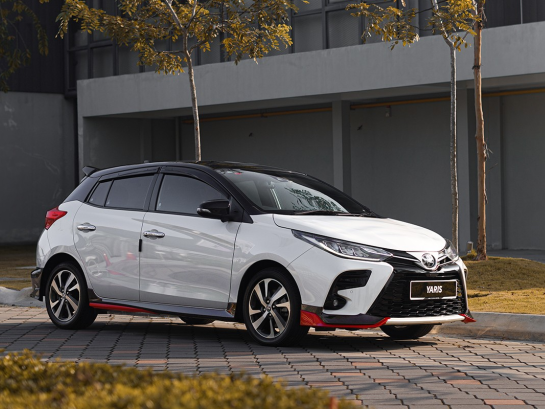
Toyota Yaris Interior Design Revealed: The Ideal Choice for Daily Commutes
AshleyJul 17, 2025
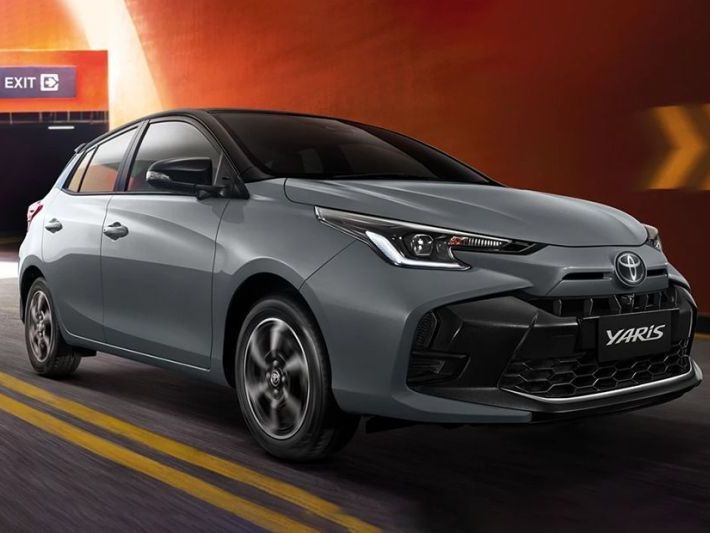
Highlights of the Toyota Yaris: The Perfect Fusion of Outstanding Power and Comfortable Handling
MichaelApr 16, 2025
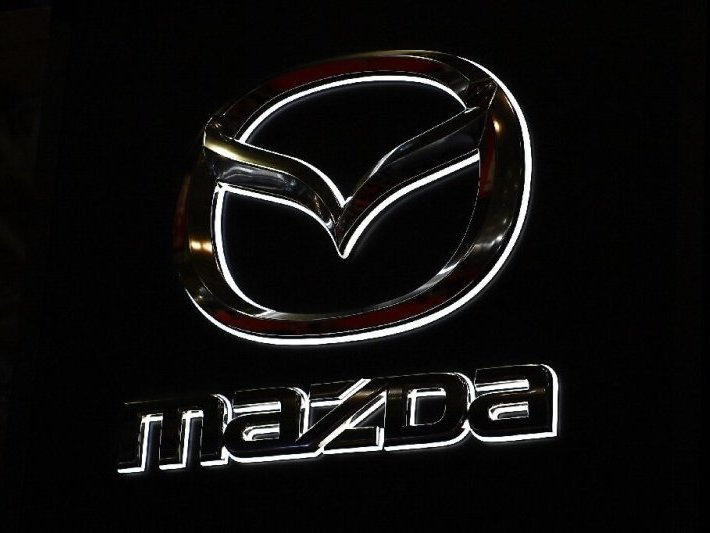
Mazda Plans to Launch CX-20 in Southeast Asia to Compete with Toyota Yaris Cross
RobertMar 20, 2025
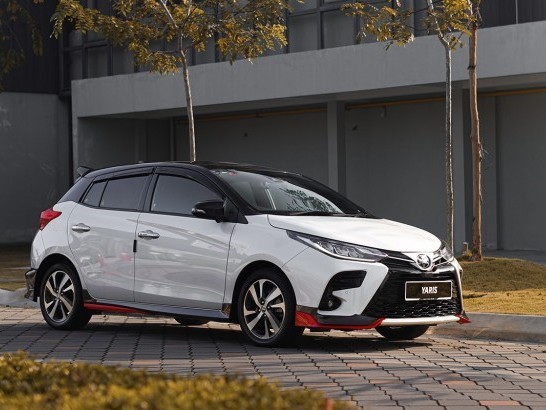
Is my Yaris fuel consumption normal? What should the fuel consumption per 100km be?
MichaelFeb 28, 2025

Toyota takes the crown at the second stop of the 2025 WRC, the GR Yaris helps Toyota take the top of the points table
JamesFeb 19, 2025
View More




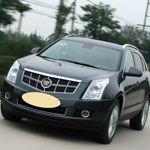






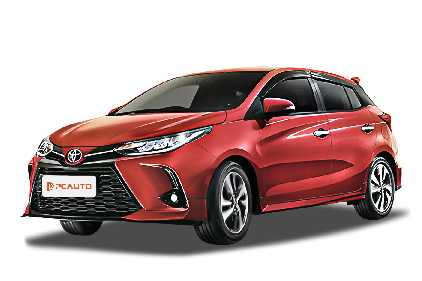





Pros
Cons